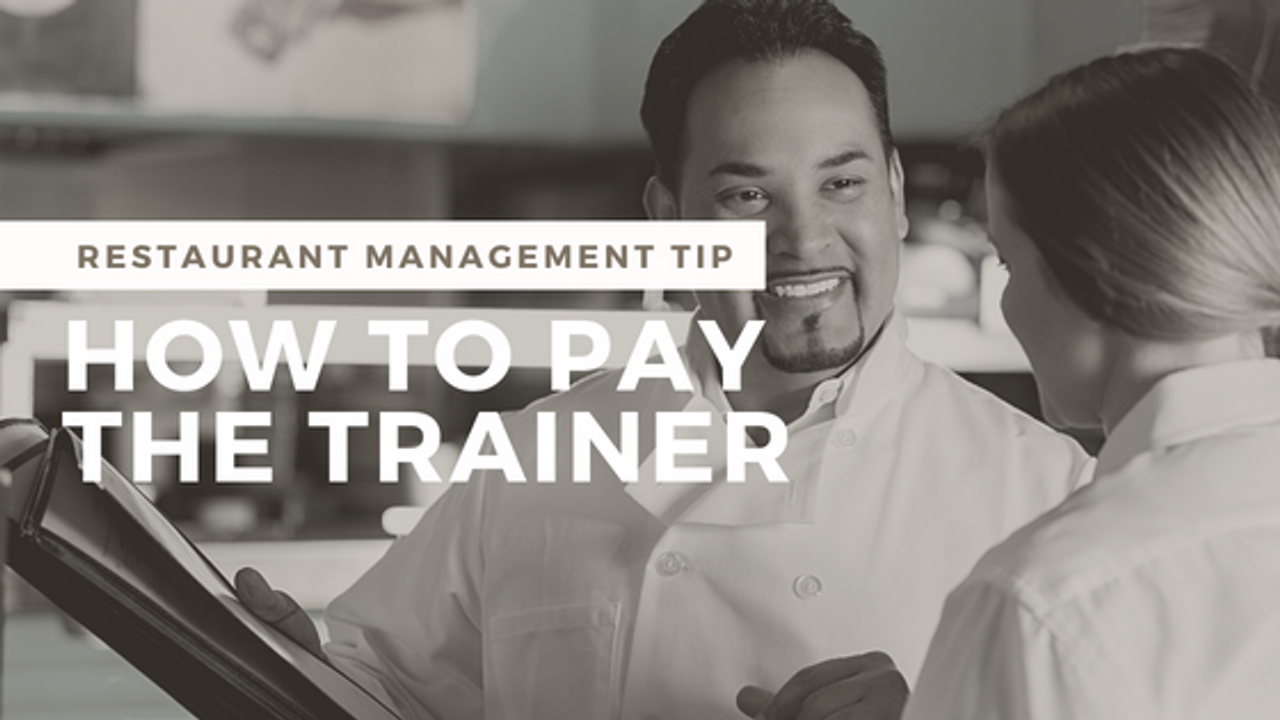How to Pay the Trainer in Restaurant Training

I’ve established for you that it’s important to have someone on your staff who does the training of new employees. It can be more than one person, but the point is they are designated as the trainers, and they’re trained to be the trainers. But how do you pay the trainer? Stay with me, and I'll give you my thoughts and pointers for how to pay the trainer in restaurant training.
Let me start off with a disclaimer. Without a budget and an understanding of where you're located, your state's minimum wage, your restaurant style of service and price point, I will not be able to give you a specific number when it comes to what you should pay your trainers, but I will be able to guide you.
For starters, you'll need to think about paying your trainers a higher hourly wage when, and only when, they are actually training new hires. And that goes for both front of house and back of house.
That means if you have a trainer, they're not in a trainer wage 24/7. Whenever they're in your business, when they're doing the job of being a trainer, that's when they get a better wage. To come up with your wage/compensation structure for paying the trainer, think about:
One: what is a good reward for them for helping you train someone into becoming a great team member. The trainer and the training process is so important to getting new hires off on the right foot. That is a big responsibility.
Two: The tips, if they're a front-of-house person in a full-service restaurant, the tips they could be missing out on to train a new hire needs to be considered. How much more do you have to pay? How much higher a rate do you have to pay this employee?
Here is where it will depend on your state's minimum wage. If you're in a state with a tip credit, if it's a tipped employee, because we have states where there are still $2.13 an hour. You could pay a server $2.13 an hour because they make up the state's minimum wage by getting tips. In states like California, in Los Angeles specifically, there is no tip credit and it's a $15 minimum wage. Imagine a server makes $15 an hour plus tips. So that's going to change our range from $2.13 to $15 to starting point to what we need to pay extra based on where you are.
This is where it gets a little hairy, but I'm going to give you some guidance. When it comes to back of house, it's much easier because you're going to pay them a buck or two more an hour when they're training somebody to make sure they feel appreciated. Because training a new hire is not only time consuming, it can be challenging, and you want to take care of your trainer. You want to make sure that you know they're going to take care of that new hire. They're going to do a great job and get them started on the right path.
If they're in a tip position, depending on the state you are and where the minimum wage starts, that may change things from $2.13 an hour state, maybe $5 or $6 an hour. Or in a $15 an hour state where there's no tip credit, you might pay a dollar or two just like the back of house.
No matter how you decided to pay the trainer in restaurant training, just make sure you are training your trainers, and you're appreciating them with a little more money. I think that's important to get people started on the right foot.
Be sure to visit my YouTube channel for more helpful restaurant management video tips.




